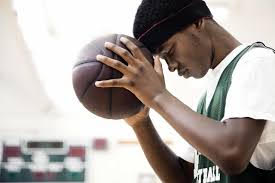In the world of professional athletics, the mind plays just as important a role as the body. While physical training is crucial, mental preparation is equally key to achieving success. One powerful tool that many top athletes use to sharpen their focus and enhance performance is visualization. This mental technique involves imagining oneself performing specific tasks or achieving goals, and it has become a staple in the routines of elite athletes across various sports.
1. What is Visualization?
Visualization, also known as mental imagery or mental rehearsal, involves vividly picturing actions, outcomes, or scenarios in the mind’s eye. Athletes use it to rehearse skills, visualize game scenarios, or even imagine themselves succeeding in a competition. The idea is that by mentally experiencing a situation, athletes can build confidence, improve technique, and reduce anxiety.
Visualization isn’t just daydreaming it’s a focused and intentional exercise where athletes create a mental picture of their performance. These images can be incredibly detailed, from how the body moves to how the environment looks, down to the sounds or emotions involved.
2. How Does Visualization Enhance Performance?
Visualization works because the brain processes images and physical actions similarly, whether they’re happening in real life or in the mind. When athletes visualize themselves executing a skill or making a key play, their brains activate the same neural pathways as if they were actually performing the action. This mental rehearsal helps reinforce muscle memory, enhance motor skills, and improve reaction times.
3. Building Confidence and Focus
One of the key benefits of visualization is its ability to build confidence. By imagining successful outcomes, athletes can mentally prepare for challenges, reduce self-doubt, and eliminate negative thoughts. For instance, a sprinter might visualize crossing the finish line in first place, while a basketball player might imagine making a game-winning shot. Repeatedly seeing success in the mind can boost an athlete’s belief in their own abilities.
Moreover, visualization enhances focus. Athletes can mentally rehearse scenarios, like how to react during intense moments of a game. This preparation allows them to stay calm and focused, even under pressure.
4. Improving Skill Mastery
In addition to boosting confidence, visualization helps athletes refine their skills. For example, a tennis player might visualize their serve, seeing the ball’s trajectory, the stance, and the perfect follow-through. A football quarterback might mentally rehearse different play executions, imagining each movement with precision. Visualization helps athletes identify areas for improvement, ensuring they have an edge when it’s time to perform.
This technique is often used in conjunction with physical practice to make the overall training more effective. By visualizing the movements and actions, athletes can increase the likelihood of executing them perfectly during actual competition.
5. Managing Anxiety and Stress
Professional athletes often face immense pressure to perform, and this stress can be debilitating. Visualization offers a way to manage anxiety by creating a sense of familiarity with high-pressure situations. When athletes imagine themselves succeeding, they feel more prepared and less fearful of failure. This mental rehearsal can calm nerves before big games or crucial moments in competition.
Take the example of Olympic athletes who are preparing for the final event. They often use visualization to picture themselves executing their best performance, while also imagining how they’ll handle any challenges or setbacks along the way. This reduces uncertainty and builds emotional resilience.
6. Real-World Examples of Visualization in Action
Many of the world’s greatest athletes swear by the power of visualization. Here are a few examples of how visualization has played a role in their careers:
- Michael Phelps: The most decorated Olympian of all time, Phelps, is a well-known advocate of visualization. Before every race, he would mentally rehearse the entire event, including potential obstacles like a mistimed start or water splashing in his face. By visualizing worst-case scenarios, he was always mentally prepared for any surprise during the race.
- Serena Williams: Tennis icon Serena Williams has credited visualization as an essential part of her routine. She visualizes not just winning the match but her entire journey through the tournament, from training to game strategies. This mental preparation helps her stay focused and adjust her game plan when needed.
- Tom Brady: The legendary quarterback has often spoken about how visualization has helped him on the field. He uses the technique to mentally run through plays, imagining the perfect execution and his response to different situations. Brady’s ability to stay calm under pressure and execute in clutch moments is partly due to his mental preparation.
7. How Athletes Can Use Visualization in Their Training
To effectively incorporate visualization into training, athletes can follow a few simple steps:
- Find a Quiet Space: Visualization works best when there are no distractions. Athletes should choose a quiet area to close their eyes and focus solely on the imagery.
- Create Detailed Mental Images: The more detailed the imagery, the more effective the visualization. Athletes should imagine the sights, sounds, feelings, and movements in as much detail as possible.
- Use Positive Imagery: Athletes should always focus on successful outcomes. Rather than imagining failure, the focus should be on success and confidence-building scenarios.
- Combine with Physical Practice: Visualization should complement physical practice, not replace it. Athletes should use visualization to reinforce what they’ve learned in training and make their mental preparation just as strong as their physical preparation.
The Mental Edge in Sports Performance
Visualization is a powerful tool that has helped countless professional athletes reach the pinnacle of their sport. By creating vivid mental images of success, athletes can enhance their focus, improve their skills, and manage anxiety. As we’ve seen with champions like Michael Phelps, Serena Williams, and Tom Brady, the mind can be just as important as the body in achieving peak performance.
Incorporating visualization into training allows athletes to be mentally prepared for any challenge, unlocking their true potential both on and off the field.

